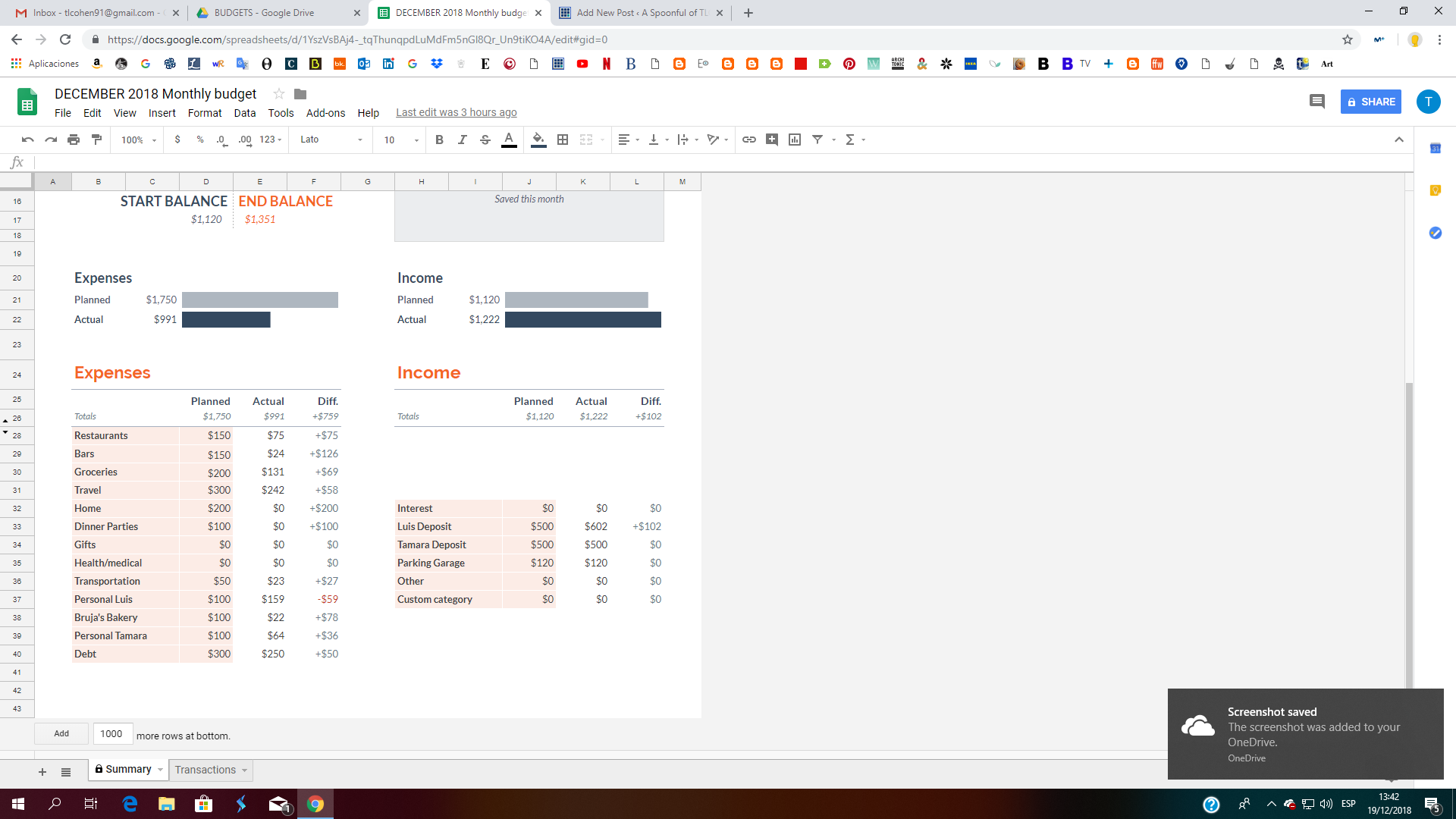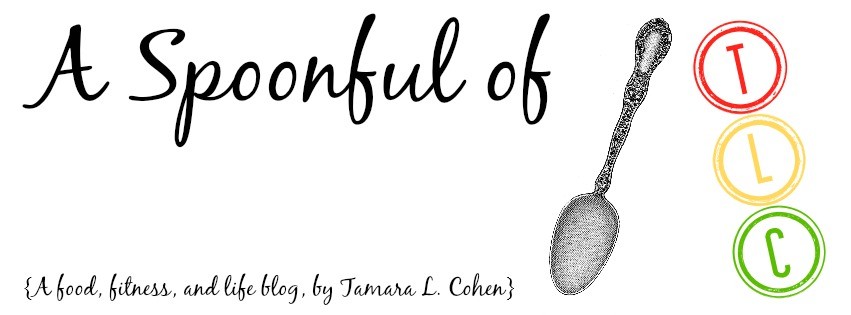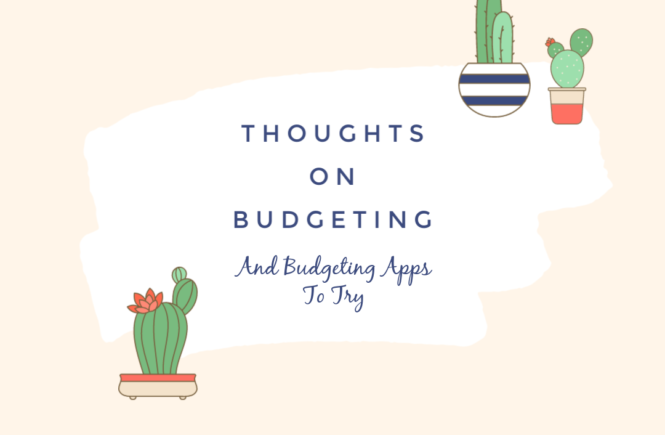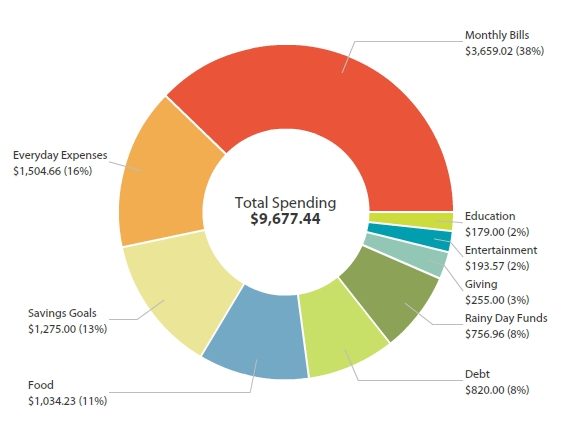It may partly be due the fact that I am currently income-less and am harboring quite a bit of anxiety surrounding that fact, but I have been very interested in budgeting, saving, and organizing money for the last few weeks. If you have been reading this blog for a long time, you know that when I moved to Spain, I immediately started writing down every single purchase, and to this day – more than 4 years later – I still do just that. Recording my purchases has changed my spending habits – and consequentially – my saving habits.
(Not my actual account ^)
I began by writing down every single purchase (from paying rent, which was about 40% of my income) to a coffee from the corner cafeteria in my neighborhood (which is around 1 Euro). I was well aware that each purchase, large or small, added up to something that either meant I was scrapping by, or living comfortably and in control of my finances. When you earn 1000 Euros/ month (plus class money), you don’t have enough money to just crazily spend. That money slips through your hands faster than you can say “que cojones….?”. Trust me. So I started writing my purchase down in a notebook, but eventually switched to writing it in my planner and that’s what I continued to do for the following 3 years. I still have those planners somewhere and I can see what were big purchases (rent, travel, and getting my hair done), and on what days I was paying what. I actually recorded my spending for a few months here on the blog (seen here and here).
When Luis and I started living together, I still recorded all of my spending in my planner, but inevitably, there are a lot of things that we share (food, household items, travel – flights, trains, travel expenses) which means that we have shared expenses. We have been together for a long time and during that time, we have never been the type to split costs (as in, let’s pay 50/50), but prefer to just share the expenses when it was appropriate. After living together for a few months, we (or…I) decided that we should be a little more organized with our expenses and started using Excel budget sheets to record our spending, which I started using in January of this year (2019). These sheets are organized into pre-set categories, but I can change the categories to match our needs and all I need to do is enter in each purchase (by hand) and then I assign it to a category and also make a note on who paid for what. At the end of the month, I create a summary email which I send to Luis that includes the totals for each category and how that month compares to previous months. I wrote a post about it here. 
Up until now, this format has worked well for us, but this summer, Luis and I decided that it would probably be a good idea to actually set some limits on these categories (like travel, groceries, fun money), just so that it feels like we have a bit of control, and also so that there is allotted money for what we enjoy doing. For my own budgeting, I am interested in creating some limits so that saving becomes easier. Before falling asleep last night, I was playing around with retirement calculators to see how much money saved per month will lead to in retirement (haha, adulting). I also want to make a more conscious effort to save a certain amount per month for “emergency money” (that will roll over), a certain amount each month to be invested (that will continue to grow with increased income), and a certain amount per month that goes into regular checking. Then beyond that, I have created categories for spending (house, travel, food, fun, health, bills, business, etc) and have created limits within those categories and subcategories. Anything that is not a fund (travel fund, emergency fund) and is leftover at the end of the month will go into my checking account, and anything that is a fund will rollover and continue to grow each month.
In my sudden obsession, I have started looking into budgeting apps/ websites that allow me to link my bank accounts and also to create categories. I am looking for something that works very well for free, but would potentially be willing to pay for a paid version. So far, my research shows this:
- YNAB (You Need a Budget) is the best on the market, but it is not free. They offer a 2 month free trial. They have a cult-like following and people relly, really recommend them. YNAB is based on being proactive instead of reactive and they propose that you should “give every dollar a job”. My only issue with it is that I can’t link my Spanish and US accounts, just US.
- Mint – Mint is the app that I used many years ago. It’s user-friendly, easy to link bank accounts, and easily organizes your spending. There are ads on the app, but they don’t bother me. Again, I can’t add my Spanish account to it.
- Wallet – Wallet is an app that I found when searching for an app that allows me to link my US and Spanish accounts. In theory, the app should work very well, but it’s not free and I am only seeing an option to pay for the whole year (50 Euros). When I read reviews, there are very mixed reviews, but this app would be ideal for what I am looking for.
- EveryDollar – I wrote about EveryDollar last week which is similar to Mint. It’s relatively easy to use, and so far I like it, but I think Mint can do more. Again, I can’t link my Spanish account.
- Honeyfi – I actually just stumbled upon this app while doing research for this article and found Honeyfi, which is an app geared towards couples. It allows you to budget for two people and allows you to mark if a purchase is for one person or both people. This could work for us!
Right now, I will continue using my Excel sheets for everything Luis and I share and I will probably use Mint for my own budgeting. At some point, I might look into YNAB since people seem to really like it and they say it’s better than Mint. For now, it just feels good to have some sort of control.
If you want to read about other budgeting apps, click here.



